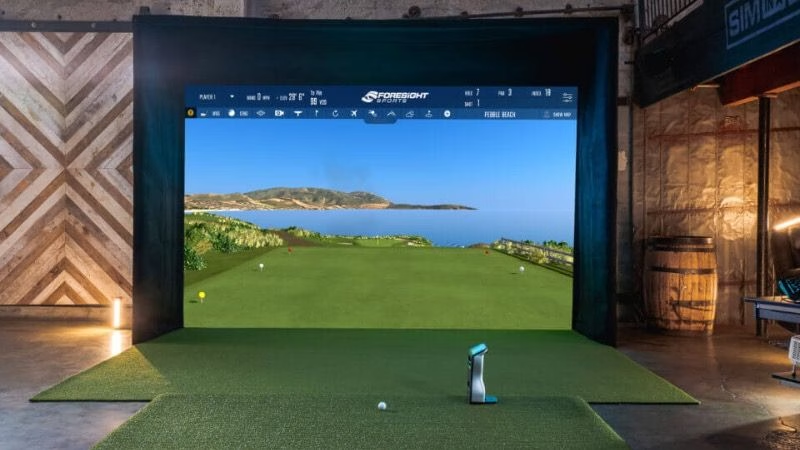You might be surprised to learn that the first golf simulator was developed in the 1970s by none other than Dave Pelz. The coach, who is best known for his work with Phil Mickelson, wanted to help his students in a controlled environment so he developed a simulator that used cameras to capture the swing and analyse it in real time.
Fast forward to 2025 where we have the new TGL where the shots are displayed on a huge 64’ by 53’ screen at the SoFi Center and, partnered by Full Swing, they use 18 radar-based launch monitors. Each of the tee boxes has three different areas to play from; real fairway grass, rough and sand.
Banks of six Full Swing Kits are positioned behind the back and front boxes of the Screenzone with three more launch monitors places in pits to the left and right of the screen. Full Swing is the brand that Tiger Woods uses for both his personal launch monitor and simulator at home.
On a more normal level golf simulators have become more and more popular, both on the high street, in golf clubs and at home. For the golf club pro there have almost become a necessity to help with fittings, lessons and to encourage members to keep swinging when the weather isn’t the best. For the regular golfer they have become more accessible and more affordable and, thanks to the various lockdowns, we’ve become more in tune with how we can improve our golf.
HOW DO THEY WORK?
The most common simulator is where golfers hit shots into a screen and the path of the ball is projected onto the screen. These are generally built into a dedicated space and allow the golfer to see where the ball would have gone on a selected course or driving range. This provides an instant and stimulating feedback to your practice or fun time. It is also possible to hit into a net for a more entry-level offering and to suit outdoor use.
Last year Garmin unveiled the Approach R50 which is the first launch monitor that also offers a full, in-built simulator experience through a 10” colour touchscreen.
The launch monitor
This is at the heart of a simulator and it measures different aspects of the ball’s flight and club performance. It uses technology such as radar, high-speed cameras, or both, to track both the movement of the ball and the club at impact. In terms of ball data it can measure ball…
..
Click Here to Read the Full Original Article at Latest from Golf Monthly in Buying-advice…
